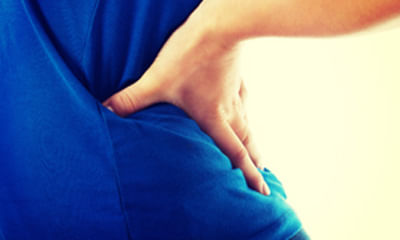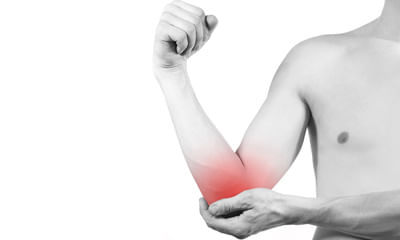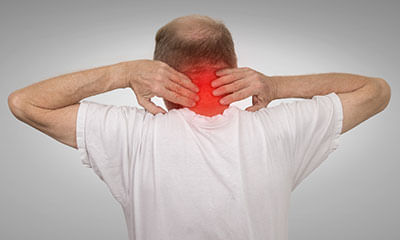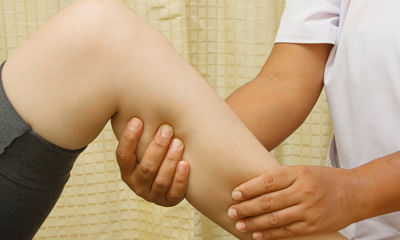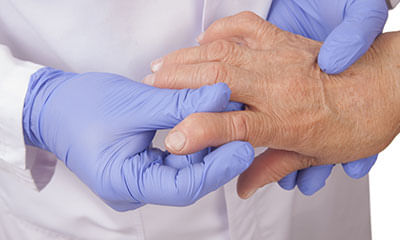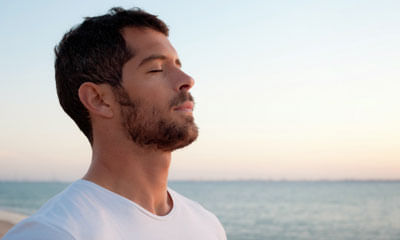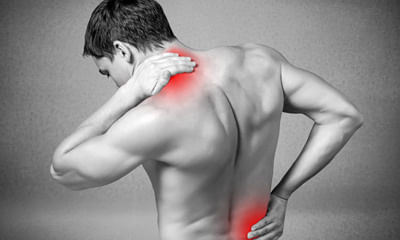What Does A Rheumatologist Do
I am suffering from planter fasciitis in both my feet. However, it is more in my left foot —heal and outside of heal on ...
Ask Free Question
Consult with rheumatologist or orthopaedic doc for medicnes, also take Ultrasound therapy for a week, which helps in reducing pain and you will be suggested with the exercises to reduce pain.
Long term shoulder/ shoulder blade pain, shoulder moved forward winter it gets worstlong term facial paining term pain i ...
Ask Free Question
The symptoms you've listed can be complex and may indicate various underlying health conditions. Given the wide range of symptoms affecting different parts of your body, it would be best to consult with a primary care physician initially. They can conduct a thorough assessment, review your medical history, and perform any necessary physical examinations. Based on your symptoms, the primary care physician may refer you to one or more specialists, depending on their assessment. Here are some specialists who may be involved in your care: neurologist: given your long-term headache, memory issues, and double vision, a neurologist specializes in evaluating and treating conditions affecting the nervous system, including the brain and nerves. Rheumatologist: if you're experiencing long-term body pain, weakness, and difficulty sleeping, a rheumatologist specializes in diagnosing and treating conditions affecting the joints, muscles, and bones, such as fibromyalgia or autoimmune disorders. Ophthalmologist: since you're experiencing long-term effects on your eyes, including double vision and changes in prescription, an ophthalmologist specializes in diagnosing and treating eye conditions and may perform a comprehensive eye examination. Orthopedic surgeon: if your shoulder and shoulder blade pain is persistent and affecting your mobility, an orthopedic surgeon specializes in diagnosing and treating musculoskeletal conditions, including injuries and disorders of the shoulder. Ent specialist (otolaryngologist): if you're experiencing long-term facial pain, pain around the ear, and difficulty sleeping due to these symptoms, an ent specialist can evaluate conditions affecting the ear, nose, and throat, such as temporomandibular joint (tmj) disorder or sinusitis. In terms of blood tests, your healthcare provider may recommend various tests based on your symptoms and suspected underlying conditions. These may include: complete blood count (cbc) comprehensive metabolic panel (cmp) thyroid function tests inflammatory markers (e.g. Erythrocyte sedimentation rate, c-reactive protein) vitamin d levels autoimmune markers (e.g. Antinuclear antibodies) lyme disease testing (if relevant based on your history and symptoms)
I am suffered of as since 2013 my lower back is fused. Can ayurvedic treatment relief ankylosing spondylitis. ...
Ask Free Question
Ankylosing spondylitis (as) is a chronic inflammatory disease that primarily affects the spine, causing inflammation, pain, stiffness, and potentially leading to fusion of the vertebrae. While there is currently no cure for as, treatment aims to manage symptoms, prevent complications, and improve quality of life. Ayurvedic medicine is a traditional system of medicine that originated in india and has been practiced for thousands of years. It utilizes a holistic approach, incorporating various therapies, including herbal remedies, dietary changes, yoga, meditation, and lifestyle modifications, to promote health and well-being. Some people with as may explore ayurvedic treatments as complementary or alternative therapies to help manage their symptoms. Ayurvedic practitioners may recommend specific herbal formulations, dietary modifications, and lifestyle practices tailored to the individual's constitution and condition. It's important to approach ayurvedic treatment for as with caution and under the guidance of a qualified ayurvedic practitioner who has experience in treating inflammatory conditions like as. While some individuals may find relief from certain ayurvedic remedies or practices, it's essential to ensure that these treatments are safe, appropriate, and do not interfere with any conventional medications or treatments prescribed by a rheumatologist or healthcare provider. It's crucial to maintain open communication with both your rheumatologist or healthcare provider and your ayurvedic practitioner to ensure that all treatments are coordinated and aligned with your overall healthcare plan.
Hi sir I am suffering from mctd? Please give me treatment right hand and left leg not sensing n small joints paining lik ...
Ask Free Question
Go for anti u1 ribonuclioprotin test do regular exercises take healthy diet counslt to rheumatologist thnks.
I am 21 years old female, suffering from rheumatoid arthritis with 38.80,since last 4 months. Please suggest what should ...
Ask Free Question
Rheumatoi d arthritis multiple joint pains / early morning painit is called as rheumatic arthritis. Treatment goals •to protect the joint from further damages. •provide pin relief. •prevent deformity and disabilities. •increase functional capacity. •improve flexibility and strength. •encourage regular exercise. •improve general fitness. Physiotherapy modalities - hot/cold applications- electrical stimulation- hydrotherapy and spa therapy this should be due to the sciatic nerve compression in the right side probably close to your l5 vertebrae. It can also be due to the strain on the left leg, try wearing mcr chappals which would help you to get relieved from pain. Rheumatoid arthritis multiple joint pains / early morning painit is called as rheumatic arthritis. Treatment goals •to protect the joint from further damages. •provide pin relief. •prevent deformity and disabilities. •increase functional capacity. •improve flexibility and strength. •encourage regular exercise. •improve general fitness. Physiotherapy modalities - hot/cold applications- electrical stimulation- hydrotherapy and spa therapy rehabilitation treatment technique - rest and splinting - compression gloves - assistive devices and adaptive equipment - massage therapy - therapeutic exercise - patient education assistive devices and adaptive equipment occupational therapy improves functional ability in patients with ra. Occupational therapy interventions such as assistive devices and adaptive equipments have beneficial effects on joint protection and energy conservation in arthritic patients. Assistive devices are used in order to reduce functional deficits, to diminish pain, and to keep patients' independence and self-efficiency. Loading over the hip joint may be reduced by 50% by holding a cane. In fact, most of these instruments are originally designed for patients with neurologic deficits; therefore, certain adaptations may be needed for them to be used in patients with arthritis. Elevated toilet seats, widened gripping handles, arrangements related with bathrooms, etc. Might all facilitate the daily life. The procedures needed to increase compliance of the patient with the environment and to increase functional independence are +mainly determined by the occupational therapist. Massage therapy that improves flexibility, enhances a feeling of connection with other treatment modalities, improves general well being, and can help to diminish swelling of inflamed joints. Massage is found to be effective on depression, anxiety, mood, and pain. Therapeutic exercise every joint should be moved in the rom at least once per day in order to prevent contracture. In the case of acutely inflamed joints, isometric exercises provide adequate muscle tone without exacerbation of clinical disease activity. Moderate contractures should be held for 6 seconds and repeated 5–10 times each day. Dynamic exercise therapy in improving joint mobility, muscle strength, aerobic capacity and daily functioning in patients with rheumatoid arthritis (ra). Finally, in chronic stage with inactive arthritis, conditioning exercises such as swimming, walking, and cycling with adequate resting periods are recommended. They increase muscle endurance and aerobic capacity and improve functions of the patient in general, and they also make the patient feel better. It might be due to lack of blood circulation which is the reason for you to have scrotum pain / back pain. You have to do basic aerobic exercises for you to become fit and also to maintain the blood circulation and tone. Patient education in patients with ra, sociopsychological factors affecting the disease process such as poor social relations, disturbance of communication with the environment, and unhappiness and depression at work are commonly encountered. The treatment of rheumatic diseases should provide education and information to their patients about their condition and the various physical therapy and rehabilitative options that are available to improve their quality of life. Passive treatments for rheumatoid arthritis •cold therapy reduces circulation, which ultimately decreases swelling. For example, a cold compress may be placed on the painful area. •cold therapy in acute phase •dosage 10-20mints/1-2 times a day. •heat therapy eases muscle tension and gets blood to flow more quickly to the painful area. For example, a moist, warm cloth may be used to promote circulation. •heat therapy in chronic phase •dosage 20-30mints/1-2 times a day. •hydrotherapy involves reducing your ra-related pain and other symptoms with water. With hydrotherapy, you will be submerged in warm water to relieve your symptoms. •massage can help reduce muscle tension and promote good circulation. It's also a fantastic way to help you manage stress (especially important for people with rheumatoid arthritis). •transcutaneous electrical nerve stimulation (tens) works by blocking pain signals from getting to your spinal cord. It also helps decrease muscle spasms. •tens short term pain relief (6 to 18 hrs) •ultrasound creates warmth using sound waves, whichenchanes circulation and decreases joint pain, inflammation, and stiffness. Exercise for acute phase: •preformed exercise at least once a day. •general assisted movement through normal range (joint mobilisation). •isometric-“static movements” helps to maintain muscle tone without increasing inflammation. Exercise for the chronic phase: •can progress the above exercise to include use of light resistance. •postural/core stability exercises. •swimming/walking/cycling to maintain cardiovascular fitness. •gentle stretch for areas that become tight, such as knees &calves. Regular exercises: •maintaing muscle strength is important for joint stability & preventing injury. •muscles can become weak following reduced activity. •pain signals from yours nerves and swelling can both inhibits muscles. •muscle length can be affected by prolonged positions immobilization and tightness can limit daily activities. Alternative therapies: •thi chi. •musical therapy. •yoga therapy. •relaxation techniques.
Hello sir mujhe systemic selodarma h mujhe doctor ne rituximab 500 mg lene ko bola h kya ye sief h. ...
Ask Free Question
Dear patient, systemic scleroderma is an auto-immune disease, rituximab is a very good and potent drug for better control of this type of diseases. And side effects to saari drugs ki hoti hai. But risk-benefit dekhna hota hai. Agar aapka disease/condition me side effects ye jyada fayda kar rhi hai drug to definitely aapko wo drug leni chahiye. Lekin kisi rheumatologist ke regular follow up me rehna. Kyuki side effects monitor ho ske .akshar rituximab se white blood cells kam ho jaate hai aue dusre infecfions ka khatra badh jata hai.
My name is parvez khan .i. Am 21 year old .i have rheumatoid arthritis from last 8 yesr old. I am using the medicine met ...
Ask Free Question
Sir, there is no permanent cure ,but you have to control it any how which is possible by medicines otherwise your joints get destructed and you will be in trouble in future.
I want to talk Dr. santosh kumar mandal (rheumatologist), i'm his patient, its urgent if possible please. ...
Ask Free Question
Rheumatoid arthritis multiple joint pains / early morning painit is called as rheumatic arthritis. Treatment goals •to protect the joint from further damages. •provide pin relief. •prevent deformity and disabilities. •increase functional capacity. •improve flexibility and strength. •encourage regular exercise. •improve general fitness. Physiotherapy modalities - hot/cold applications- electrical stimulation- hydrotherapy and spa therapy this should be due to the sciatic nerve compression in the right side probably close to your l5 vertebrae. It can also be due to the strain on the left leg, try wearing mcr chappals which would help you to get relieved from pain. Rheumatoid arthritis multiple joint pains / early morning painit is called as rheumatic arthritis. Treatment goals •to protect the joint from further damages. •provide pin relief. •prevent deformity and disabilities. •increase functional capacity. •improve flexibility and strength. •encourage regular exercise. •improve general fitness. Physiotherapy modalities - hot/cold applications- electrical stimulation- hydrotherapy and spa therapy rehabilitation treatment technique - rest and splinting - compression gloves - assistive devices and adaptive equipment - massage therapy - therapeutic exercise - patient education assistive devices and adaptive equipment occupational therapy improves functional ability in patients with ra. Occupational therapy interventions such as assistive devices and adaptive equipments have beneficial effects on joint protection and energy conservation in arthritic patients. Assistive devices are used in order to reduce functional deficits, to diminish pain, and to keep patients' independence and self-efficiency. Loading over the hip joint may be reduced by 50% by holding a cane. In fact, most of these instruments are originally designed for patients with neurologic deficits; therefore, certain adaptations may be needed for them to be used in patients with arthritis. Elevated toilet seats, widened gripping handles, arrangements related with bathrooms, etc. Might all facilitate the daily life. The procedures needed to increase compliance of the patient with the environment and to increase functional independence are +mainly determined by the occupational therapist. Massage therapy that improves flexibility, enhances a feeling of connection with other treatment modalities, improves general well being, and can help to diminish swelling of inflamed joints. Massage is found to be effective on depression, anxiety, mood, and pain. Therapeutic exercise every joint should be moved in the rom at least once per day in order to prevent contracture. In the case of acutely inflamed joints, isometric exercises provide adequate muscle tone without exacerbation of clinical disease activity. Moderate contractures should be held for 6 seconds and repeated 5–10 times each day. Dynamic exercise therapy in improving joint mobility, muscle strength, aerobic capacity and daily functioning in patients with rheumatoid arthritis (ra). Finally, in chronic stage with inactive arthritis, conditioning exercises such as swimming, walking, and cycling with adequate resting periods are recommended. They increase muscle endurance and aerobic capacity and improve functions of the patient in general, and they also make the patient feel better. It might be due to lack of blood circulation which is the reason for you to have scrotum pain / back pain. You have to do basic aerobic exercises for you to become fit and also to maintain the blood circulation and tone. Patient education in patients with ra, sociopsychological factors affecting the disease process such as poor social relations, disturbance of communication with the environment, and unhappiness and depression at work are commonly encountered. The treatment of rheumatic diseases should provide education and information to their patients about their condition and the various physical therapy and rehabilitative options that are available to improve their quality of life. Passive treatments for rheumatoid arthritis •cold therapy reduces circulation, which ultimately decreases swelling. For example, a cold compress may be placed on the painful area. •cold therapy in acute phase •dosage 10-20mints/1-2 times a day. •heat therapy eases muscle tension and gets blood to flow more quickly to the painful area. For example, a moist, warm cloth may be used to promote circulation. •heat therapy in chronic phase •dosage 20-30mints/1-2 times a day. •hydrotherapy involves reducing your ra-related pain and other symptoms with water. With hydrotherapy, you will be submerged in warm water to relieve your symptoms. •massage can help reduce muscle tension and promote good circulation. It's also a fantastic way to help you manage stress (especially important for people with rheumatoid arthritis). •transcutaneous electrical nerve stimulation (tens) works by blocking pain signals from getting to your spinal cord. It also helps decrease muscle spasms. •tens short term pain relief (6 to 18 hrs) •ultrasound creates warmth using sound waves, whichenchanes circulation and decreases joint pain, inflammation, and stiffness. Exercise for acute phase: •preformed exercise at least once a day. •general assisted movement through normal range (joint mobilisation). •isometric-“static movements” helps to maintain muscle tone without increasing inflammation. Exercise for the chronic phase: •can progress the above exercise to include use of light resistance. •postural/core stability exercises. •swimming/walking/cycling to maintain cardiovascular fitness. •gentle stretch for areas that become tight, such as knees &calves. Regular exercises: •maintaing muscle strength is important for joint stability & preventing injury. •muscles can become weak following reduced activity. •pain signals from yours nerves and swelling can both inhibits muscles. •muscle length can be affected by prolonged positions immobilization and tightness can limit daily activities. Alternative therapies: •thi chi. •musical therapy. •yoga therapy. •relaxation techniques.
I havs ankylosing spondylitis for almost 20 years now and I have been taking etoricoxib 90 mg daily once, sulphasalazine ...
Ask Free Question
Continuous intake of painkiller can damage kidney. For pain you can take tramadol which will very less toxic effect to kidney. Get dose of medicine adjusted. Do deep breathing exercise to relieve anxiety and in turn pain.
I am suffering from inclusive body mitosis ibm where my legs and hand muscles have become weak and difficultly in walk a ...
Ask Free Question
1.wrist flexion and extension place your forearm on a table on a rolled-up towel for padding with your hand hanging off the edge of the table, palm down. • move the hand upward until you feel a gentle stretch. Return to the starting position. Repeat the same motions with the elbow bent at your side, palm facing up. 2.wristsupinatuon and pronation• stand or sit with your arm at your side with the elbow bent to 90 degrees, palm facing down. • rotate your forearm, so that your palm faces up and then down. 3.wrist ulnar and radial deviation • support your forearm on a table on a rolled-up towel for padding or on your knee, thumb upward. • move the wrist up and down through its full range of motion. 4.thumb flexion and extenion • begin with your thumb positioned outward. • move the thumb across the palm and back to the starting position. 5. Hand/finger tendon glide • start with the fingers extended straight out. • make a hook fist; return to a straight hand. • make a full fist; return to a straight hand. • make a straight fist; return to a straight hand. #forearm squeeze use a pair of forearm grips or another object that you can squeeze, such as a tennis ball or a sock. Extend and then flex your fingers to squeeze the item. Hold for 3 to 5 seconds and then relax your grip for a few seconds. Continue for 10 to 15 minutes. Do this 2 to 3 times per day. Wrist stretching exercises •wrist range of motion •flexion: gently bend your wrist forward. Hold for 5 seconds. Do 2 sets of 15. •extension: gently bend your wrist backward. Hold this position 5 seconds. Do 2 sets of 15. •side to side: gently move your wrist from side to side (a handshake motion). Hold for 5 seconds in each direction. Do 2 sets of 15. •wrist stretch: press the back of the hand on your injured side with your other hand to help bend your wrist. Hold for 15 to 30 seconds. Next, stretch the hand back by pressing the fingers in a backward direction. Hold for 15 to 30 seconds. Keep the arm on your injured side straight during this exercise. Do 3 sets. •wrist extension stretch: stand at a table with your palms down, fingers flat, and elbows straight. Lean your body weight forward. Hold this position for 15 seconds. Repeat 3 times. •wrist flexion stretch: stand with the back of your hands on a table, palms facing up, fingers pointing toward your body, and elbows straight. Lean away from the table. Hold this position for 15 to 30 seconds. Repeat 3 times. •forearm pronation and supination: bend the elbow of your injured arm 90 degrees, keeping your elbow at your side. Turn your palm up and hold for 5 seconds. Then slowly turn your palm down and hold for 5 seconds. Make sure you keep your elbow at your side and bent 90 degrees while you do the exercise. Do 2 sets of 15. Strengthening exercises •wrist flexion: hold a can or hammer handle in your hand with your palm facing up. Bend your wrist upward. Slowly lower the weight and return to the starting position. Do 2 sets of 15. Gradually increase the weight of the can or weight you are holding. •wrist extension: hold a soup can or hammer handle in your hand with your palm facing down. Slowly bend your wrist up. Slowly lower the weight down into the starting position. Do 2 sets of 15. Gradually increase the weight of the object you are holding. •grip strengthening: squeeze a soft rubber ball and hold the squeeze for 5 seconds. Do 2 sets of 15.

